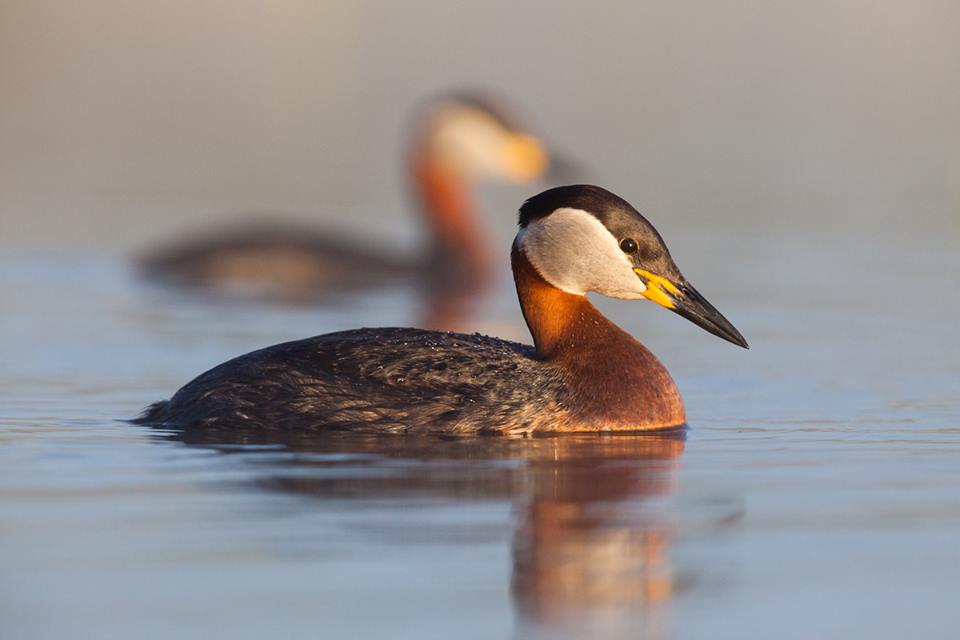Red–necked grebe: Red Data Book of Armenia

Grebes — Podicipedidae
Status. A non–migratory species of limited distribution and decreasing population. Listed in the IUCN Red List of Threatened Species (ver. 3.1) as Least Concern. According to IUCN criteria categorized as Vulnerable VU D1.
Distribution. Distributed in Europe, Asia, Nordic countries, Northern Russia, Ukraine, Central Asia and the Caucasus. Beyond the nesting areas, occurs in the British Isles, Mediterranean countries, Asia Minor, Iran.
Distribution in Armenia. During the spring and autumn migrations occurs on the Lake Sevan, Lake Arpi, natural and artificial water bodies of the Ararat Valley. During the nesting season occurs also on lakelets of the Lori Plateau.
Habitats. For nesting prefers the lakes, lakelets and reservoirs with lush riparian vegetation and open water surface.
Biological traits. Eggs are laid on broken reeds and residues of riparian and aquatic vegetation, not far from the shoreline. Eggs are whitish, 4–5/clutch, size 47–51 mm. The brooding period is 27–29 days. Hatchlings have excellent skills of swimming and diving.
Population size and its trends. Before the subsidence of the Lake Sevan, it nestled in the basin of this lake. Before 2005, 6 to 10 breeding pairs occurred on a lakelet beside the Ardanis village. Afterwards, nesting discontinued because of the increase in rodent abundance and significant fluctuations of lake water level. At present, 5–15 breeding pairs are recorded on lakelets of the Lori Plateau.
Major threats. During the breeding season, birds are exposed to disturbance by anglers, fluctuations of water level, and poaching.
Conservation measures. Protected in Lake Arpi National Park and Sevan National Park. The outreach educational activities are organised among the people living near the lakelets in order to raise their awareness in conservation. It is essential to carry out the species census throughout a year, identify possible nesting sites and ensure their safety, declare the lakelets of the Lori Plateau an Important Bird Area and to strengthen anti–poaching activities during migrations and wintering.
Suggestions
 The Ministry of Environment sent a letter international partners to draw their attention to the real danger of environmental disasters as a result of Azerbaijan's large-scale aggression towards the territory of Armenia
The Ministry of Environment sent a letter international partners to draw their attention to the real danger of environmental disasters as a result of Azerbaijan's large-scale aggression towards the territory of Armenia
 Vicia pisiformis: Red Data Book of Armenia
Vicia pisiformis: Red Data Book of Armenia
 Vavilovia formosa: Red Data Book of Armenia
Vavilovia formosa: Red Data Book of Armenia
 Trigonella capitata: Red Data Book of Armenia
Trigonella capitata: Red Data Book of Armenia
 Trigonella astroides: Red Data Book of Armenia
Trigonella astroides: Red Data Book of Armenia












